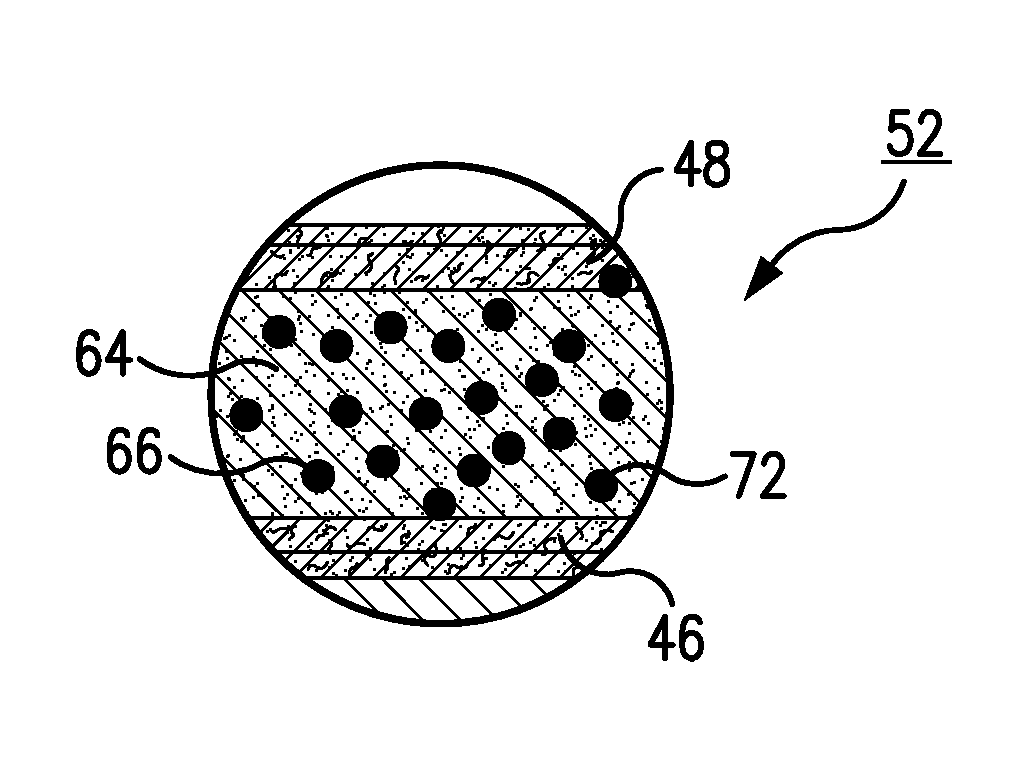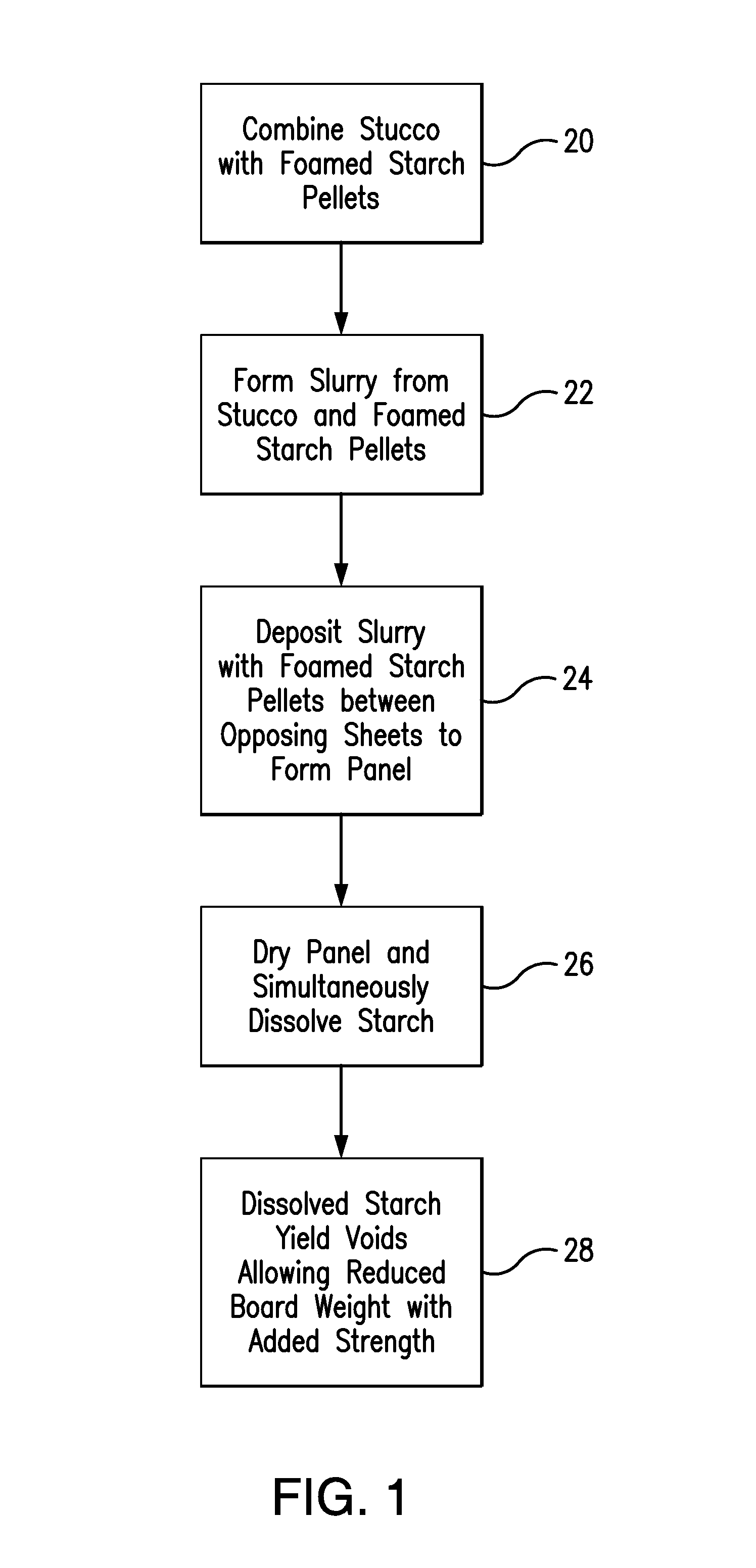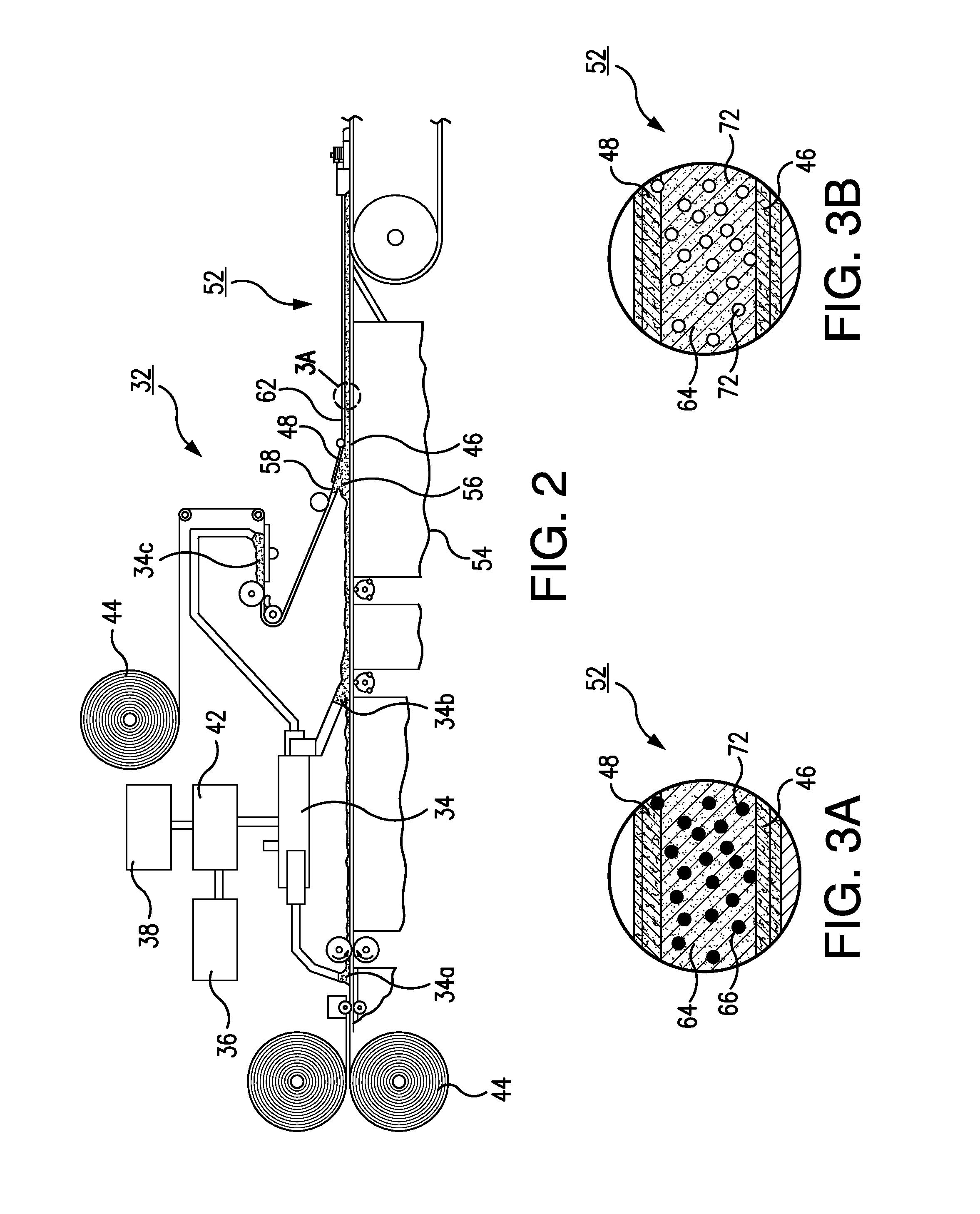System and method for the production of gypsum board using starch pellets
a technology of gypsum board and starch pellets, which is applied in the direction of turning machine accessories, water-setting substance layered products, drawing profiling tools, etc., can solve the problems of difficult control of associated machinery, difficult to form voids of the correct size, and all suffer from common drawbacks
- Summary
- Abstract
- Description
- Claims
- Application Information
AI Technical Summary
Benefits of technology
Problems solved by technology
Method used
Image
Examples
Embodiment Construction
[0027]The present invention relates to a system and method for the production of gypsum board using foamed starch beads. In accordance with the present disclosure, the starch needed for preferred board formation is provided in the form of individual foamed beads. These beads are dispersed within a gypsum slurry by way of a mixer. The pellets are initially insoluble and do not dissolve in the presence of the gypsum slurry. However, during subsequent heating in a dryer, the beads become soluble and dissolve into the gypsum phase. This dissolution provides the desired starch component to the gypsum while at the same time producing voids within the core.
[0028]The preferred starch beads, or pellets, are formed by way of an extrusion process. During the process, air is combined with starch via an extruder. The resulting foamed pellets may be of an irregular size but generally have a diameter of between approximately 1 / 32 of an inch to 1 / 64 of an inch. A mix of different sized pellets can ...
PUM
| Property | Measurement | Unit |
|---|---|---|
| temperatures | aaaaa | aaaaa |
| temperature | aaaaa | aaaaa |
| temperature | aaaaa | aaaaa |
Abstract
Description
Claims
Application Information
 Login to View More
Login to View More - R&D
- Intellectual Property
- Life Sciences
- Materials
- Tech Scout
- Unparalleled Data Quality
- Higher Quality Content
- 60% Fewer Hallucinations
Browse by: Latest US Patents, China's latest patents, Technical Efficacy Thesaurus, Application Domain, Technology Topic, Popular Technical Reports.
© 2025 PatSnap. All rights reserved.Legal|Privacy policy|Modern Slavery Act Transparency Statement|Sitemap|About US| Contact US: help@patsnap.com



